Dissecting the resilience of barley genotypes under multiple adverse environmental conditions
- PMID: 38163863
- PMCID: PMC10759481
- DOI: 10.1186/s12870-023-04704-y
Dissecting the resilience of barley genotypes under multiple adverse environmental conditions
Abstract
As climate change increases abiotic stresses like drought and heat, evaluating barley performance under such conditions is critical for maintaining productivity. To assess how barley performs under normal conditions, drought, and heat stress, 29 different varieties were examined, considering agronomic, physiological, and disease-related characteristics. The research was conducted in five environments: two normal environments in 2020/2021 and 2021/2022, two drought stress environments in 2020/2021 and 2021/2022, and one heat stress environment in 2021/2022. The results demonstrated that genotype and environment significantly influenced all traits (p < 0.05), except canopy temperature, while genotype x environment interaction significantly influenced most traits, except total chlorophyll content and canopy temperature. Heat and drought stress environments often resulted in reduced performance for traits like plant height, spike length, grains per spike, and 100-grain weight compared to normal conditions. Based on individual traits, genotypes 07UT-44, 06WA-77, 08AB-09, and 07N6-57 exhibited the highest grain yield (4.1, 3.6, 3.6, and 3.6 t/ha, respectively). Also, these genotypes demonstrated enhanced stability in diverse drought and heat stress conditions, as assessed by the mean performance vs. stability index (Weighted Average of Absolute Scores, WAASB). The multi-trait stability index (MTSI) identified 07UT-44, 07UT-55, 07UT-71, and 08AB-09 as the most stable genotypes in terms of the performance of all traits. The imported lines demonstrated superior performance and stability, highlighting their potential as valuable genetic resources for developing climate-resilient barley.
Keywords: Barley (Hordeum vulgare L.); Climate resilience; Environmental variability; Heat stress; Stability index (MTSI).
© 2023. The Author(s).
Conflict of interest statement
The authors declare no competing interests.
Figures


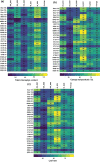
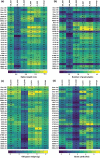

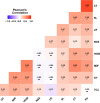

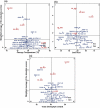

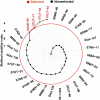
Similar articles
-
Assessment of genetic diversity and yield performance in Jordanian barley (Hordeum vulgare L.) landraces grown under Rainfed conditions.BMC Plant Biol. 2017 Nov 2;17(1):191. doi: 10.1186/s12870-017-1140-1. BMC Plant Biol. 2017. PMID: 29096621 Free PMC article.
-
Marker-trait association for grain weight of spring barley in well-watered and drought environments.Mol Biol Rep. 2019 Jun;46(3):2907-2918. doi: 10.1007/s11033-019-04750-6. Epub 2019 Mar 23. Mol Biol Rep. 2019. PMID: 30904979
-
Genetic diversity and genetic variation in morpho-physiological traits to improve heat tolerance in Spring barley.Mol Biol Rep. 2018 Dec;45(6):2441-2453. doi: 10.1007/s11033-018-4410-6. Epub 2018 Nov 8. Mol Biol Rep. 2018. PMID: 30411192
-
Plant breeding and drought in C3 cereals: what should we breed for?Ann Bot. 2002 Jun;89 Spec No(7):925-40. doi: 10.1093/aob/mcf049. Ann Bot. 2002. PMID: 12102518 Free PMC article. Review.
-
Stay-Green Trait: A Prospective Approach for Yield Potential, and Drought and Heat Stress Adaptation in Globally Important Cereals.Int J Mol Sci. 2019 Nov 20;20(23):5837. doi: 10.3390/ijms20235837. Int J Mol Sci. 2019. PMID: 31757070 Free PMC article. Review.
Cited by
-
Synergistic effects of foliar applied glycine betaine and proline in enhancing rice yield and stress resilience under salinity conditions.PeerJ. 2025 Mar 12;13:e18993. doi: 10.7717/peerj.18993. eCollection 2025. PeerJ. 2025. PMID: 40098812 Free PMC article.
-
Influence of parboiling conditions on rice grain quality characters and insect infestation with rice weevil (Sitophilus oryzae. L) of some rice cultivars.BMC Plant Biol. 2024 Oct 17;24(1):978. doi: 10.1186/s12870-024-05651-y. BMC Plant Biol. 2024. PMID: 39420297 Free PMC article.
-
Optimizing wheat productivity through integrated management of irrigation, nutrition, and organic amendments.BMC Plant Biol. 2024 Jun 14;24(1):548. doi: 10.1186/s12870-024-05213-2. BMC Plant Biol. 2024. PMID: 38872106 Free PMC article.
-
Precision phenotyping of a barley diversity set reveals distinct drought response strategies.Front Plant Sci. 2024 Jun 24;15:1393991. doi: 10.3389/fpls.2024.1393991. eCollection 2024. Front Plant Sci. 2024. PMID: 38984164 Free PMC article.
-
Revitalizing maize growth and yield in water-limited environments through silicon and zinc foliar applications.Heliyon. 2024 Jul 25;10(15):e35118. doi: 10.1016/j.heliyon.2024.e35118. eCollection 2024 Aug 15. Heliyon. 2024. PMID: 39157312 Free PMC article.
References
-
- Kumar N, Khurana SMP. Potential push of Climate Change on Crop Production, Crop Adaptation, and possible strategies to mitigate this. Glob Clim Chang Plant Stress Manag. 2023;35–51.
-
- Ouda SA, El-Mesiry T, Gaballah MS. Effect of using stabilizing agents on increasing yield and water use efficiency in barley grown under water stress. Aust J Basic Appl Sci. 2007;1:571–7.
MeSH terms
LinkOut - more resources
Full Text Sources
Research Materials

